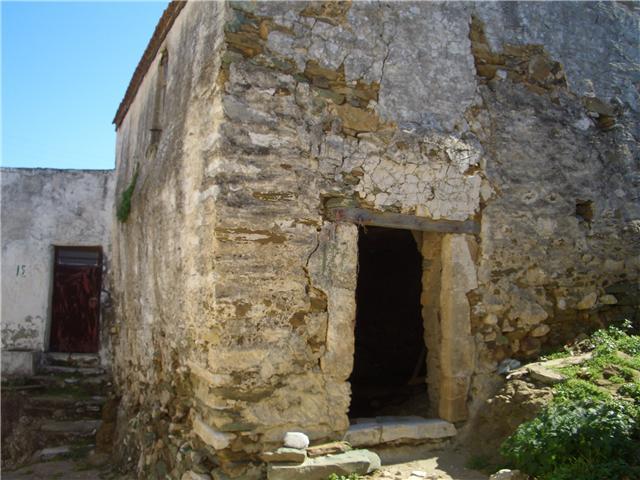
Developing a large area with historical and domestic dwellings and a long established community is challenging. These proposals are purely theoretical and are offered here as an aid to consultation and discussion with all stakeholders and interested parties.
There are three possible models:
Total rebuild:
This is not a possibility in the short to medium term. The disruption and complexity of titles, the absence of many inhabitants and the inconvenience to the ageing population make this extremely difficult and undesirable.
Health and Social support services:
The decline in the local area is symptomatic of the changing economic needs, the expansion of tourism, and the social and demographic changes that are common all over the developed and developing world. Family structures are becoming less cohesive and the care of the old, traditionally seen as the responsibility of family members is becoming less effective.
Mobility and distance travelled to work are adding to the strain of caring for ageing relatives. The process is well documented elsewhere, but quoted here simply, as a backdrop to the proposal for an integrated approach to health care of senior citizens. The most effective model would be a local health and well being service, integrating geriatric care services, such as home visits, mobility and access clinic and family liaison with often absent relatives.
The model would be serviced by three layers of personnel: 1) Fully funded core of three professionals, one of whom will be based in the village, one based at the main hospital in Heracleion, but having the overview of the village health care programme, and a third, who will have a peripatetic function; the two latter posts would be shared with adjacent local areas. 2) Students from the University and Trainees from the main Hospital, and 3) Volunteers from Upper schools, undertaking the work as part of an Internationally accredited Baccalaureate.
Partial rebuild would involve the improvement of elderly citizens living spaces, accessibility, and the establishment of a health facility within the village. It would also look at at remodelling some of the streets to enable small, aided motorised transport for senior citizens. Disruption should be kept to a minimum, with some cosmetic alterations to the village, repairing older properties and making deteriorating structures waterproof and safe.
Partial rebuild,
with commercial
expansion and significant staged restoration:
This model assumes that the residents and title holders who are not living in the village, will want to see growth and development, which adds sympathetically to the traditional character of the village. There is much evidence however, that even 'sympathetic' development of tourist related industries can overwhelm a community and create a 'tourist' village, active in the summer and dormant in winter. Taking the village of Kritsa as an example in the prefecture of Lasithi, we can see that the addition of mainly local crafts has created a rather monotonous high street, with the same goods on sale for the entire length of the visit. Congestion and lack of diversity make for a somewhat limiting experience for the locals and the visitors. The question then is, what would make a village far nicer to live in, and create a sense of excitement when someone, whether Greek or a foreign visitor?
In the small and beautiful town of Amalfi in Italy, we can see a different model of sympathetic use of space and assets.
Firstly, there is development of the side streets, with small traditional restaurants spilling out into the sheltered side streets. This takes away some of the traffic from the main road, and spreads funding and resources throughout the residential parts of the village. What is lost in terms of privacy, is gained in terms of restoration and maintenance throughout the town. The same can be said of the development of Rethymnon and Heracleion in Crete. Traffic is increasingly directed away from one area into smaller side streets.
Secondly,
there is diversity in the goods available for purchase. In Amalfi,
within a short distance we can find a wide range of goods, priced from
a few Euros (limoncello) to several thousands (paintings by well known
local artists). Products cater for different budgets, but also have
the more important effect of creating a multi-layered and multi-sensory
experience, enticing visitors to stay longer and seek out the item, the
'find', which encapsulates their experience.
Thirdly, tourist and souvenir shops often seriously miss the point, by underestimating the visual awareness of many visitors. Most people want something of quality, and reasonably priced. Size and materials are also of great importance if the buyer is returning home by air. Traditional crafts for the home, in tune with the diversity and eclectic values of modern interiors (however broad that concept is-it can be addressed, if we look at the success of IKEA, for instance) are abundant on Crete.
Factory produced Minotaur heads are impressive, but not when hundreds of them stare at you from every possible corner. Volume is good for costs, but poor for diversity and quality. Locally made craft, seen to be made if possible has greater integrity and value. World wide dispatch/insurance services at reasonable cost is also essential.
In the context of this final model, restoration services for housing and shops would be extensive; it would be essential to look at historical accuracy, traditional materials, sustainability, and green energy ( wind, solar and bio-thermal energy). Sewage and water technology would need major redesign. This would be a long term project lasting several years, and looking at considerable rebuilding and civic redesign. More recent cement structures would be replaced by stone built, earthquake proof dwellings.